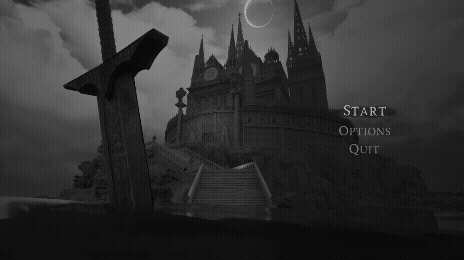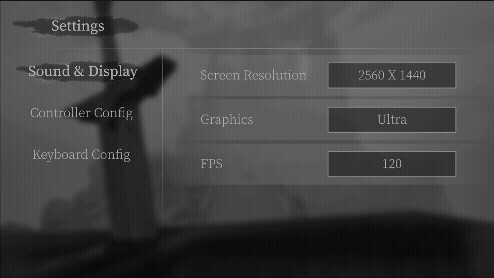

Crimson Knight
Tools Used: Unreal Engine 5.5, Blueprints, Figma, Adobe Creative Suite
Roles: Encounter Design (Tutorial), UI Design
Overview
Crimson Knight is a third-person Soulslike game set in a purgatory-like realm. Players take on the role of the Crimson Knight, a fallen servant of a god-like figure known as the Absolute. Condemned for his past, he must fight his way through a cathedral that reshapes itself with every step.
This project is a Capstone game developed at the Florida Interactive Entertainment Academy (FIEA). Created by Squinky Studios, a 17-member team from Cohort 21.

Sentinel of Order character modeled by Richard Bacallao
View Richard's ArtStation
Role & Contributions
I designed and implemented the opening encounters that onboard the player into Crimson Knight, integrating both gameplay flow and UI design. Alongside the encounter work, I created the game’s main menu, pause and settings menus, health and stamina bars, enemy health bars, and in-world contextual prompts. My goal was to teach core combat mechanics naturally through environmental cues, enemy placement, and supporting UI, keeping the player immersed in the story.
Design Goals
Player onboarding
-
Introduce core mechanics (movement, lock-on, light/heavy attack, sidestep, roll) without interrupting gameplay flow.
-
Gradually layer complexity from safe exploration to multi-enemy encounters.
-
Use environmental hazards and enemy placement to reinforce mechanics through play.
UI Design Goals
-
Create clear, functional UI elements that support player learning without breaking immersion.
-
Design and implement main menu, pause/settings menus, health and stamina bars, and enemy health bars.
-
Develop contextual in-world prompts that appear only when relevant, adapting for both controller and keyboard input.
Menu UI
Information Architecture
Mapped out the full menu structure to define navigation hierarchy and user flow.

Control Mapping & Settings Organization
Organized and updated the taxonomy for controls and settings across keyboard and controller to improve clarity and consistency

In-Game Menus
Menus implemented in Unreal Engine 5 for both Xbox controller and keyboard.



Tutorial Blockout
Designed the tutorial to gradually introduce mechanics in a safe-to-danger progression, starting with low-risk spaces for experimentation and building toward encounters that require all learned abilities.




Rising Environment
Scripted a dynamic, rising environment to isolate the first half of the tutorial area, allowing the player to focus on learning basic movement and then transitioning into their higher risk combat encounters.


UI Tutorial Prompts
Implemented contextual prompts that are placed in the world, always face the player, and temporarily slow the game until the required input is given.

Health and Stamina Bars
Designed HUD elements for player and boss health, as well as stamina, keeping them clear and unobtrusive during combat. Anchored within safe zones for different aspect ratios and tested for visibility in varied lighting.


